"Forty-five Miles an Hour, But Standing Still" |
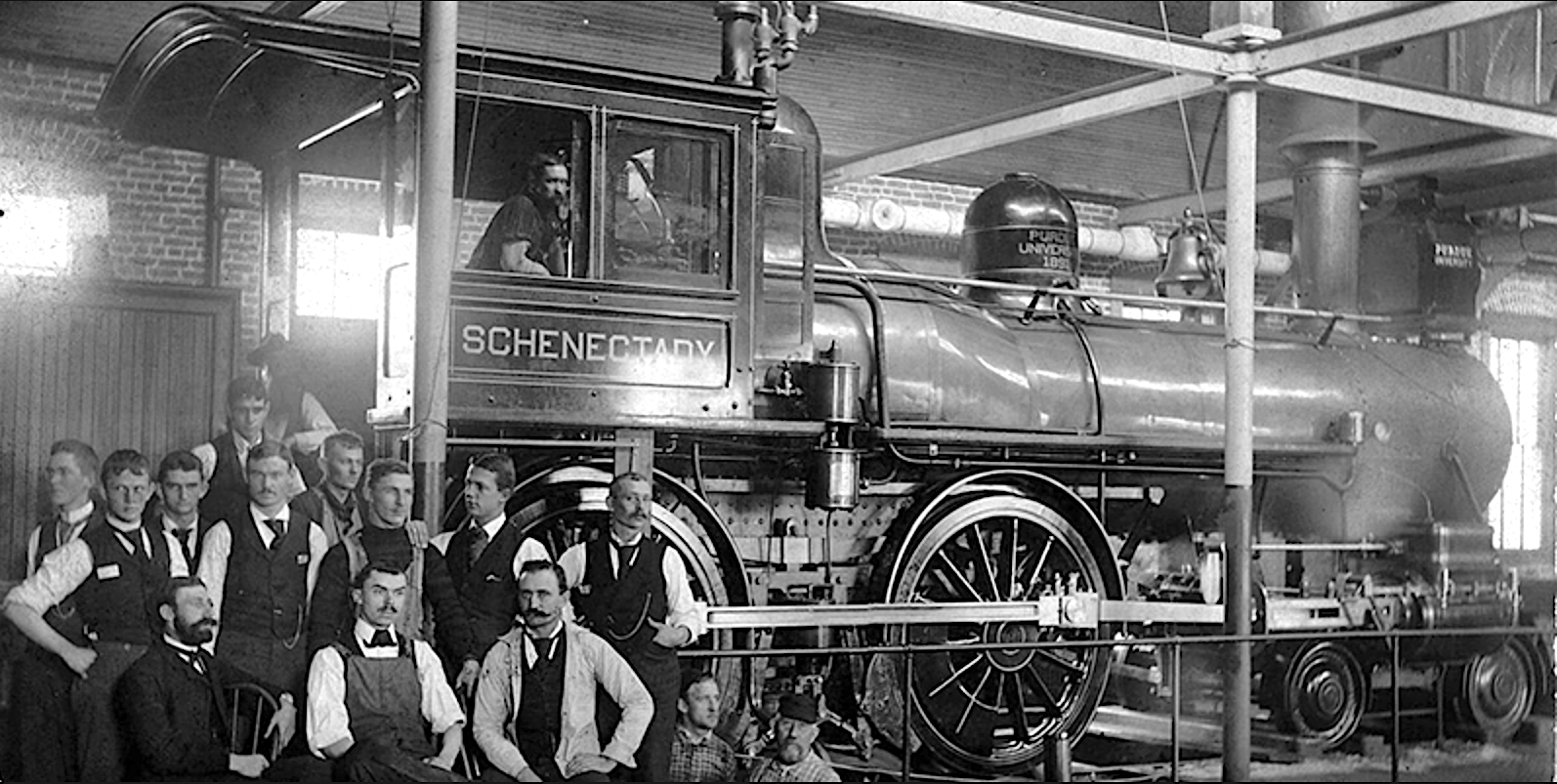
The builder plate on this 4-4-0 is obscured, but the loco's name beneath the window is a good clue. The university was given two similarly named experimental locomotives (Nos. 1 & 2). (Purdue University c.1910, photographer unknown) |
|
|---|---|---|
| New: 1 January 2024 | ||
|
. . . So read the headline from a "Farmers Weekly Review" (during the 1920s) to describe
the locomotive dynamometer test laboratory at one local university.
Dynamometers have been used extensively by design engineers and researchers to measure and enhance perfomance of all types of automotive, truck, aircraft and marine engines for decades. Yet, the first engine dyno (as it is more commonly known) was built in the mid-1890s for Purdue University at Lafayette, Indiana. Its purpose was to measure the output power of railroad steam engines, as well as electric interurban motor cars. Not-to-be-out-done, long-time rival University of Illinois also opened a locomotive test lab, in 1912. Those early lab buildings were comparable in size to a one and a half-stall roundhouse with basement pit that contained large rollers located underneath the drive wheels of a locomotive; the locomotive chassis was anchored in-place to prevent movement. When conducting tests, the free-spinning rollers measured motive power output. On Purdue's experimental "Schenectady" (pictured at top), "The pull on the drawbar was measured by a weighed arm connected to a series of levers." Recognizing the railroad industry's impact on the economic and social fabric of the U.S. other universities gradually entered the field. Rather than invest heavily in construction of a free-standing locomotive test facility, the newcomers opted to transform various types of railroad cars into rolling test laboratories. Penn State University was among the first to employ the innovative approach. Quick to recognize the advantage of a rolling laboratory, the University of Illinois and Purdue University also built test cars. It was not long afterwards that locomotive builders (and eventually railroads) began fashioning dynamometer cars that addressed their own specific requirements. We'll take a closer look at the modern day dynamometer car in next month's profile. |
||
Photo Gallery | |
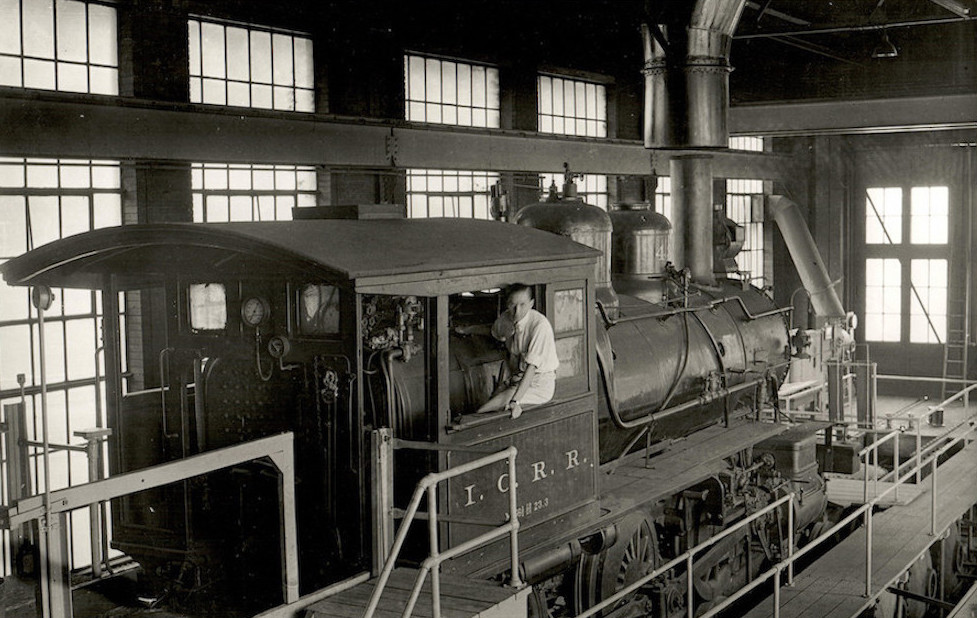
Steamer Illinois Central #431 (an 1892 Rogers-built 2-6-0) occupied the University of
Illinois test facility at the time of this 1934 George Krambles photo. (Krambles-Peterson
Archives) |
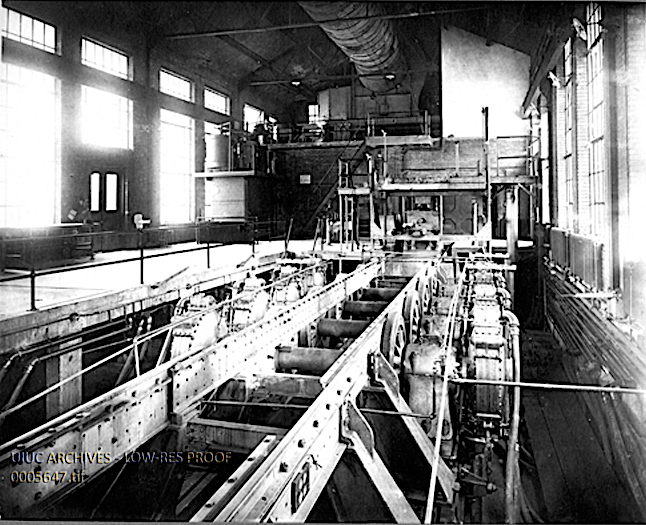
This view inside the University of Illinois lab building depicts the facility's layout,
with test stand and traction dynamometer roll machinery in the foreground. (Photo courtesy
of the University of Illinois Archives) |
The pride-and-joy of UofI's Railway Engineering Department, which was founded in 1906, was
its nearly 5,000-square-foot Test Lab building. In addition to collecting data on real-world
locomotive performance, the facility also served as a classroom and training center for the
development of steam engine and interurban electric technologies. (Photo courtesy of the
University of Illinois Archives) |
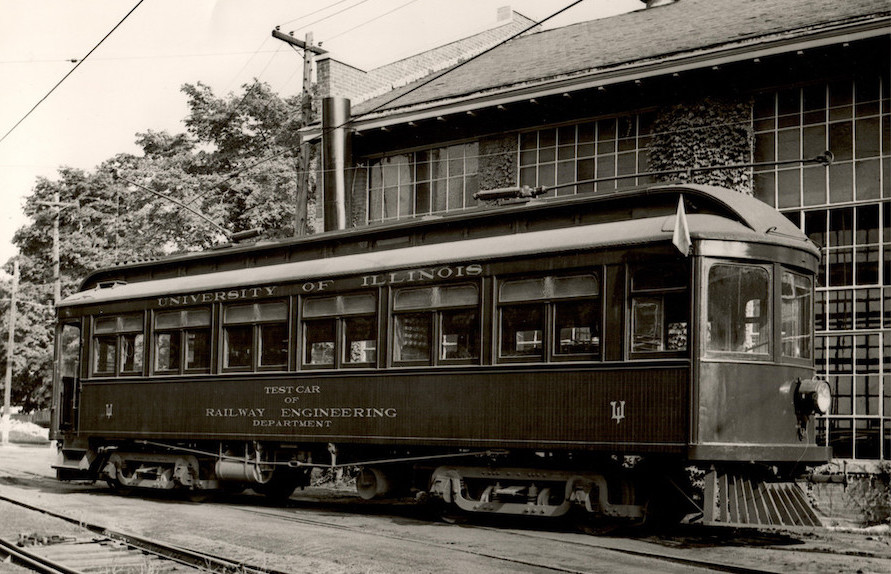
Jewett Car Company of the early 1900s was widely know for the manufacturer of interurbans
and streetcars; hence they were a logical choice when the University of Illinois went shopping
for an experimental test car. At 44'-10", the one-of-a-kind test vehicle was custom built.
(George Krambles photo / Krambles-Peterson Archives) |
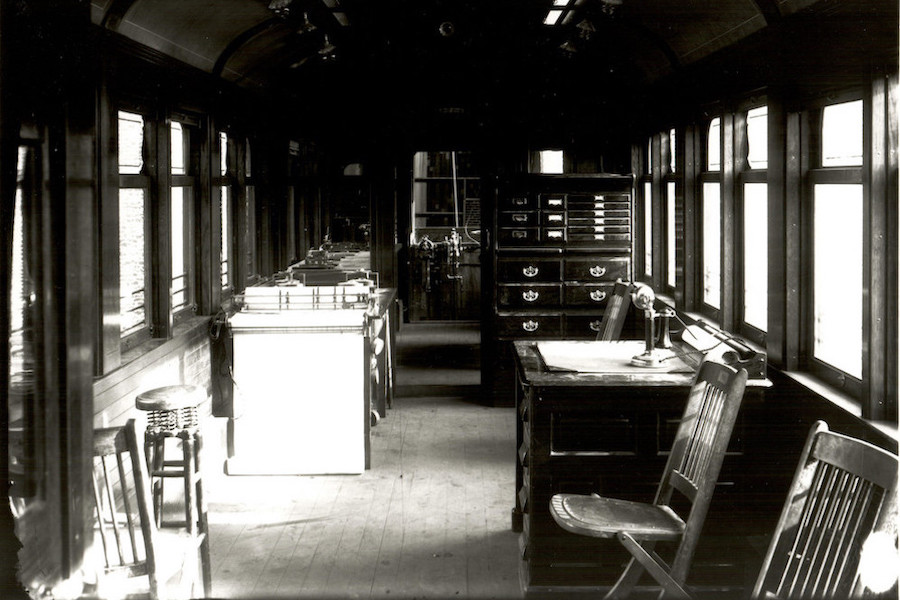
A peek inside the University of Illinois test car reveals a sparse work space up-front with
measuring equipment and instrumentation behind a divider panel. Can anyone identify the
purpose of the four-legged stool with springs at center left - some type of shock absorber
test . . . ? (George Krambles photo / Krambles-Peterson Archives) |
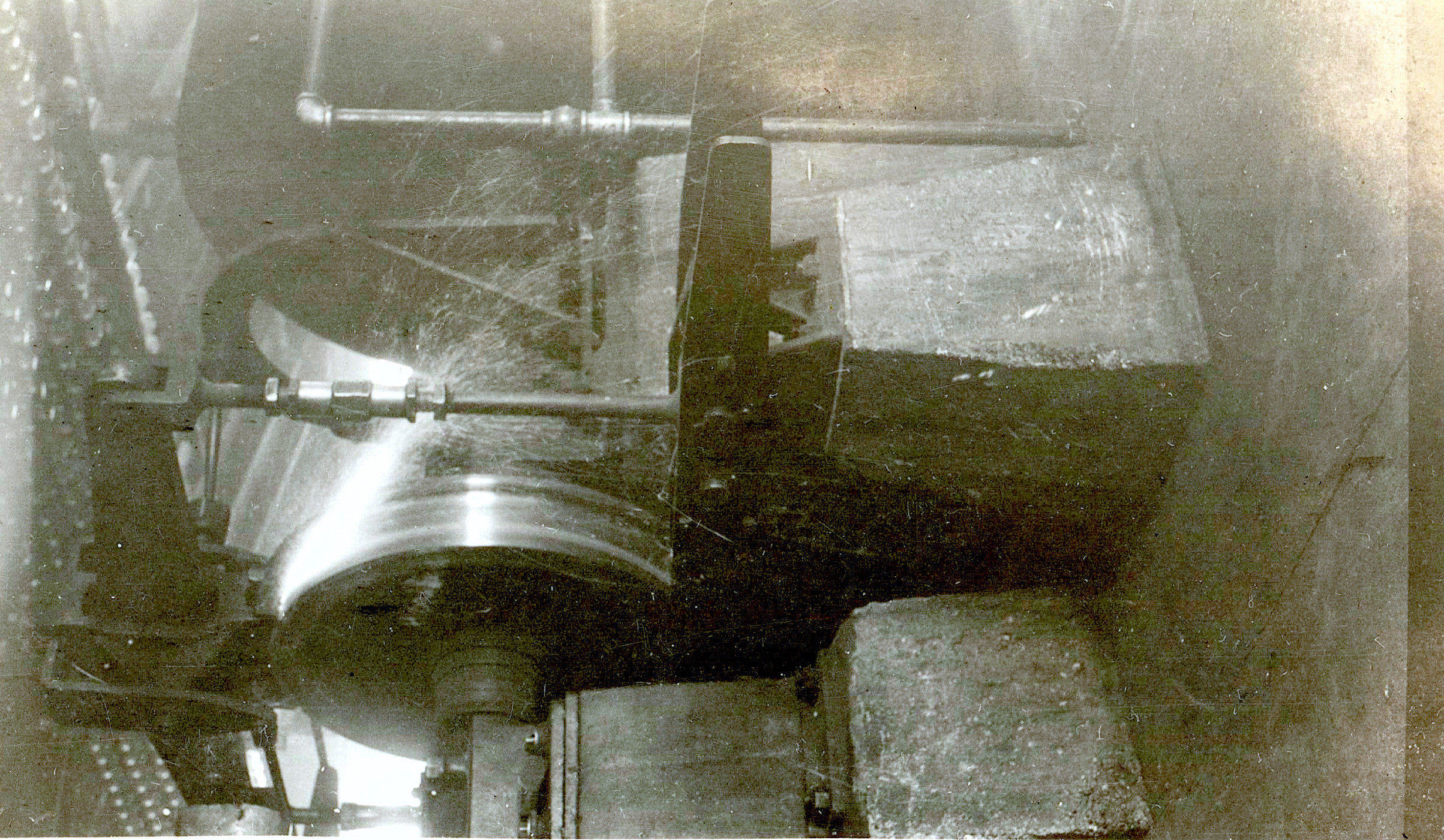
Although less glamorous than testing a "45-mph" locomotive, the importance of evaluating
train safety equipment was not to be diminished. The UofI and Purdue labs also conducted
tests on brakes systems, axle-loadings and draft gears. (George Krambles photo / Krambles-Peterson
Archives) |
|
|
|